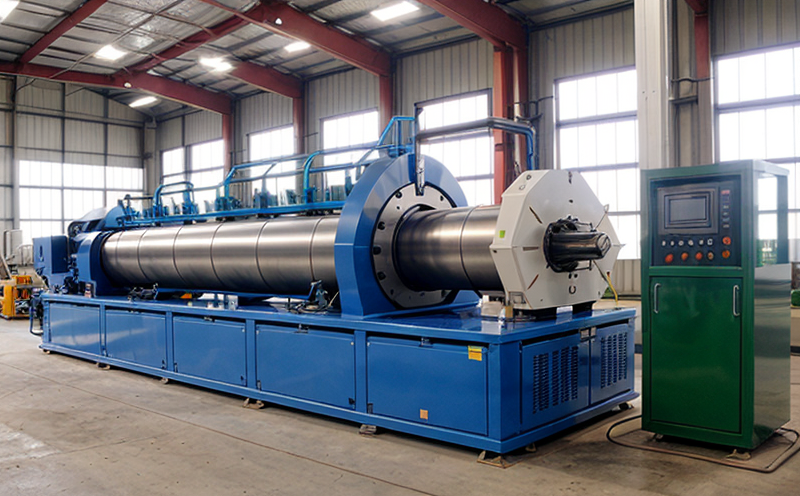ASTM E3200 Recovery Efficiency of Waste Recycling Streams
The ASTM E3200 standard provides a structured approach to evaluating the recovery efficiency of waste recycling streams. This critical service assesses how effectively materials are recovered from mixed waste streams, ensuring that valuable resources are conserved and environmental impact is minimized. The process involves detailed analysis of raw material inputs, processing steps, and final product outputs.
The testing protocol outlined in ASTM E3200 focuses on quantifying the recovery efficiency by comparing the amount of recovered materials to the original waste stream volume. This measurement is crucial for waste management companies, recycling facilities, and manufacturers looking to improve their resource recovery processes and meet regulatory standards.
During the testing process, samples are prepared from various waste streams, which include a mix of recyclable materials such as plastics, metals, paper, glass, and organic matter. These samples undergo rigorous processing through simulating real-world recycling methods including sorting, cleaning, shredding, and separation processes. The efficiency is then calculated based on the amount of material successfully recovered compared to the total volume of waste processed.
The service also involves detailed analysis using advanced instrumentation such as X-ray fluorescence (XRF), near-infrared spectroscopy (NIRS), and gas chromatography-mass spectrometry (GC-MS) to identify and quantify specific elements present in the recycled materials. This ensures that the recovered material meets specified quality standards, which is essential for its subsequent use in manufacturing.
Customer impact and satisfaction are significant benefits of this service. By providing accurate recovery efficiency data, companies can make informed decisions about process improvements and resource allocation, leading to reduced waste generation and increased sustainability. The insights gained from these tests help streamline operations, reduce costs, and enhance overall recycling performance.
- Improved Resource Recovery: Enhanced accuracy in resource recovery leads to better use of raw materials, reducing the need for virgin resources.
- Cost Savings: Optimized processes lead to lower operational costs and increased profitability.
- Better Decision Making: Accurate data supports strategic planning and investment in sustainable technologies.
- Regulatory Compliance: Ensured adherence to environmental regulations, enhancing company reputation.
Applied Standards
The ASTM E3200 standard is widely recognized and applied in the field of waste management for its comprehensive approach to evaluating recycling efficiency. This standard ensures that all testing procedures are consistent, reliable, and reproducible across different facilities.
The ASTM E3200 protocol specifies detailed methodologies for sample preparation, processing simulation, and final product analysis. It also includes criteria for determining the acceptable recovery efficiencies based on specific material types and recycling processes. Compliance with this standard is essential for ensuring accurate and fair assessments of recycling efficiency.
Other relevant standards include ISO 14001 for environmental management systems, ISO 50001 for energy management systems, and EN 12237 on waste classification. These additional standards provide a holistic framework for sustainable practices in the waste management sector, complementing the specific focus of ASTM E3200.
By adhering to these internationally recognized standards, laboratories ensure that their testing services meet high-quality benchmarks and contribute to global sustainability goals.
Scope and Methodology
The scope of the ASTM E3200 service covers a wide range of waste streams commonly processed in recycling facilities. This includes but is not limited to plastics, metals, paper, glass, organic matter, and mixed municipal solid wastes. The service is designed to assess the efficiency of recovery for each material type within these streams.
The methodology involves several key steps: sample preparation, processing simulation, and final product analysis. Sample preparation begins with collecting representative samples from various waste streams. These samples are then processed using methods that replicate real-world recycling processes such as shredding, sorting, cleaning, and separation techniques.
Processing simulates the entire recycling process to ensure that all materials undergo the same conditions they would experience in a commercial facility. This step is crucial for obtaining accurate recovery efficiency data. Following processing, the final products are analyzed using advanced instrumentation to identify and quantify specific elements present in the recovered materials.
The acceptance criteria for each material type are based on international standards such as ASTM E3200 itself, ISO 14572-1, and EN 934. These criteria ensure that only materials meeting specified quality standards are considered successful recoveries.
Once all steps have been completed, the recovery efficiency is calculated by comparing the amount of recovered material to the original waste stream volume. This calculation provides a clear and quantifiable measure of recycling process performance.
Customer Impact and Satisfaction
- Informed Decision Making: Detailed reports help customers make informed decisions about their waste management strategies, leading to more efficient operations.
- Increased Sustainability: Enhanced recycling efficiency contributes to overall sustainability efforts by reducing environmental impact and conserving resources.
- Cost Efficiency: Accurate data enables customers to identify areas for process optimization, ultimately leading to cost savings.
- Better Reputation: Compliance with international standards enhances the reputation of companies involved in waste management and recycling processes.
The service not only provides critical insights into recycling efficiency but also supports continuous improvement efforts within waste management and recycling facilities. By offering accurate, reliable testing services, we help our customers stay ahead in the rapidly evolving field of sustainable resource recovery.





